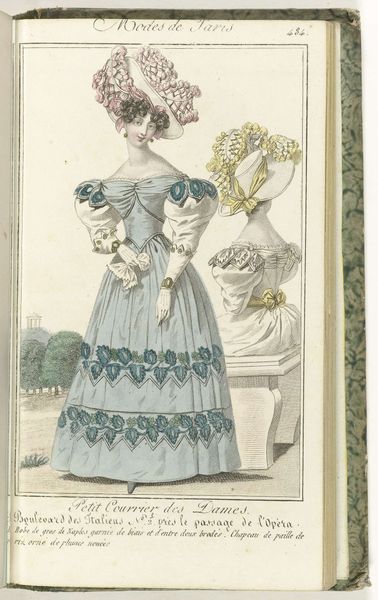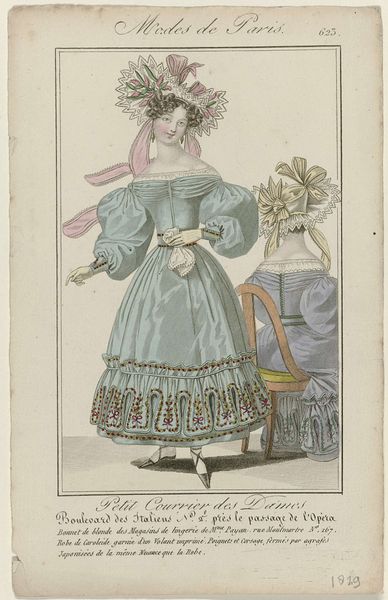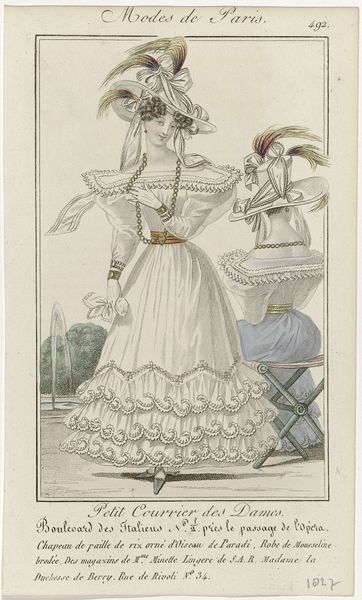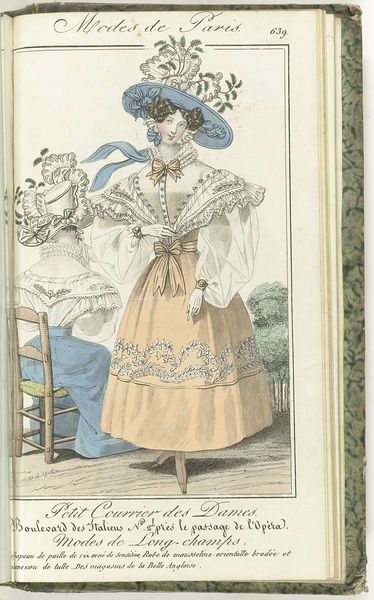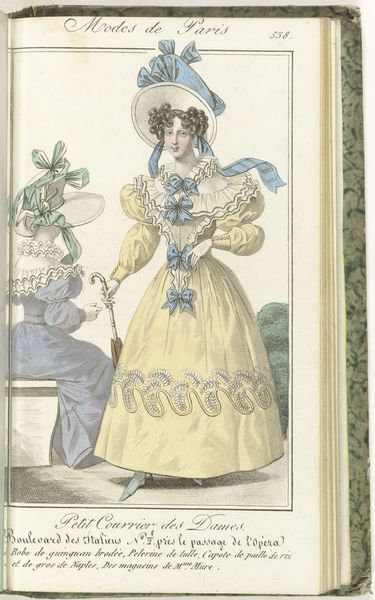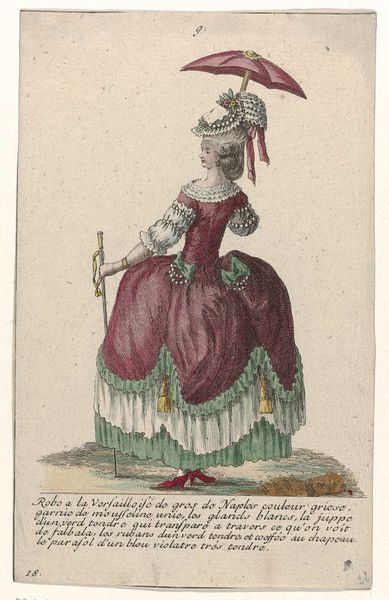
print, engraving
# print
#
figuration
#
romanticism
#
genre-painting
#
engraving
Dimensions: height mm, width mm
Copyright: Rijks Museum: Open Domain
Curator: Welcome! Today, we’re examining “Petit Courrier des Dames 1823 (166),” a print from 1823 by Jean-Charles-Michel Barreau, held at the Rijksmuseum. Editor: My initial impression is of soft elegance—the delicate lines of the engraving and muted palette create a sense of refined gentility, despite the odd proportions. Curator: Absolutely. This image provides insight into the social world of early 19th-century Parisian fashion. As a print, it served to disseminate the latest styles to a wide audience, mainly the aristocratic class. Note the title "Petit Courrier des Dames"—a ladies’ fashion journal, acting as a subtle mirror that promoted social ideals and class distinctions. Editor: Right, and the labor that went into both creating and consuming this image fascinates me. Consider the craftsmanship: the fine details etched into the metal plate, and the process of making paper. The fabric textures represented are amazing: note the puffed sleeves of the white satin dress! It shows a skilled understanding of textile production. It really underscores that the visual representation and its availability as a commodity in that specific society went hand in hand. Curator: Indeed, and further emphasizing these ties, we see the influence of Romanticism in the genre painting's focus on sentiment and idealization, with the woman gesturing to an unseen landscape, emphasizing the era’s interest in the interior self and reflection within a constructed femininity. Who has access to reflection if they cannot afford a mirror to view themselves? Editor: It's fascinating how it speaks to the accessibility—or rather, the inaccessibility—of these materials and ideals based on social status and the economics of labor. This printed sheet served not just to instruct about the correct styles to emulate, but what and whom those styles signify in the rapidly emerging bourgeoisie. The dress of Barège emphasizes the role of dressmaking to show material status. Curator: It also reflects broader narratives of the period. The “Polonaise toque” is, for example, referencing political power through style. Fashion as a form of both social advancement and resistance against prescribed norms. Editor: So we get a sense of not just the individual artistry but the web of creation, dissemination, and ultimately, consumption that defines this piece and its cultural impact. Curator: Precisely, underscoring how images of fashion intertwined with social and cultural narratives, contributing to evolving identities of its viewers.
Comments
No comments
Be the first to comment and join the conversation on the ultimate creative platform.





